OSR Masters: How drought and pests have challenged our four OSR growers
Very dry soils and persistent cabbage stem flea beetle activity have made oilseed rape establishment more challenging than expected for most of our Oilseed Rape Masters this season.
In the last of this three-part series, we discover how the four growers have been getting on and asks if the worst of their worries are now behind them.
Philip Woods
DH Woods & Son and PR Farming, Kensworth, Bedfordshire
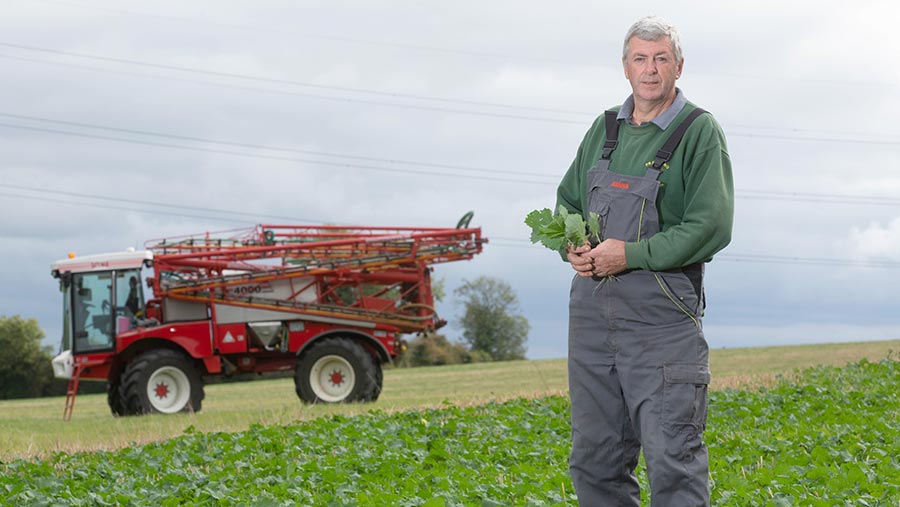
Philip Woods © Tim Scrivener
The best of the oilseed rape crops being grown by Philip Woods this year are those that showed good autumn vigour, confirming his belief that “cheap and cheerful” is not the right approach to growing the crop.
At Lynchfield Corner Farm, hybrid seed that went into healthy, well-textured soil has grown strongly, despite coming up against drought and flea beetle attack. Just a single crop – being grown on one of Mr Woods’ outlying contract farms – has been scrapped in such a difficult year.
The 55ha of oilseed rape being grown on the home farm was drilled on 22 August, in the second drilling opportunity of the month after some rain. A trial 12ha area of Clearfield rapeseed is growing on charlock-infested ground, alongside hybrid varieties Extrovert and Expedient.
One insecticide spray was necessary this year, and the plants have grown away from the cabbage stem flea beetles since then.
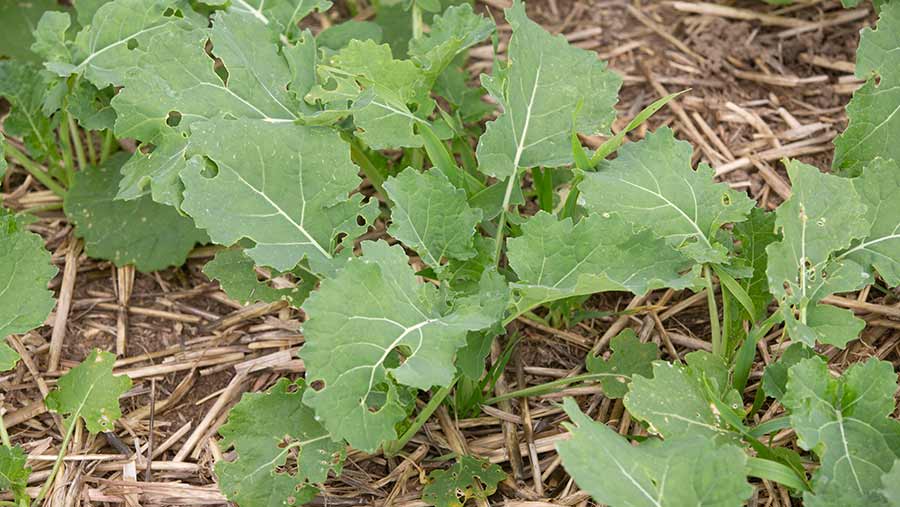
Young OSR with flea beetle damage © Tim Scrivener
Change of drill
In a change from his standard practice, Mr Woods opted not to use his Mzuri strip-till drill to establish the crop. Instead, he straw-raked the ground twice in different directions and used his Horsch drill fitted with low-disturbance, narrow coulters.
“It was too dry to use the Carrier cultivator followed by the Mzuri, which is our usual method, as the ground was rock hard. I had also sold the previous hybrid barley crop’s straw, which was worth doing, so didn’t have the residue to help with moisture retention,” Mr Woods adds.
Read all of the articles in the OSR Masters series
As before, he put a companion crop of berseem clover over the back of the drill, hoping to assist rooting and reduce weed germination, while also possibly distracting flea beetles.
“Unfortunately the clover has struggled in the dry conditions. At the moment, it’s not doing what I would like it to do,” he says.
Seed rates
His aim is to get 30 oilseed rape plants/sq m in the spring, so seed rates are calculated accordingly and matched to the expected establishment rate of soil zones.
He is applying clethodim to areas of his oilseed rape where there is a flush of early grassweeds and is waiting to make the Cleravo (imazamox + quinmerac) application to the Clearfield variety.
Some 6ha of Corteva’s new broad-leaved weed herbicide, Belkar (halauxifen+picloram), has been applied on a neighbouring oilseed rape field, so that he can compare the two systems side-by-side.
“It will be interesting to see how it performs. There is quite a range of weeds in that field, so I used the 0.5 litre/ha rate,” he says.
He has spread diammonium phosphate fertiliser (DAP) up the tramlines, but establishment has been slower than he is used to with the Mzuri strip-till system. To date, no slug pellets have been applied and there aren’t any plans to apply any fungicides.
David Lord
Lord & Hunt, Clacton-on-Sea, Essex
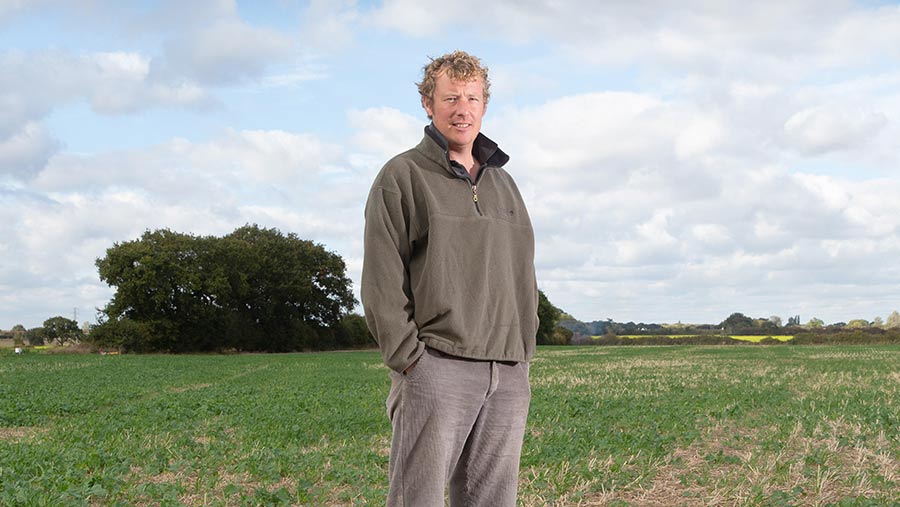
David Lord © Tim Scrivener
Cabbage stem flea beetle has taken its toll on this year’s new oilseed rape crop on David Lord’s farm in Essex, with 12ha having to be redrilled.
For the first time at Earl’s Hall Farm, the pest did considerable damage to emerging plants over the August bank holiday weekend, forcing Mr Lord to take action to ensure the majority of the crop survived.
Although the headlands escaped unscathed, the middle of some fields were decimated – so both spraying and strategic redrilling were required
“It was very localised and very sudden. Areas of the crop simply vanished over the weekend,” he says.
As a result, all of his 83ha of oilseed rape has received an insecticide spray this year – something he hasn’t had to do for the past few years and prefers to avoid.
“We monitored pest numbers and as they were building up, we sprayed a pyrethroid at night. It was all we could do,” he says.
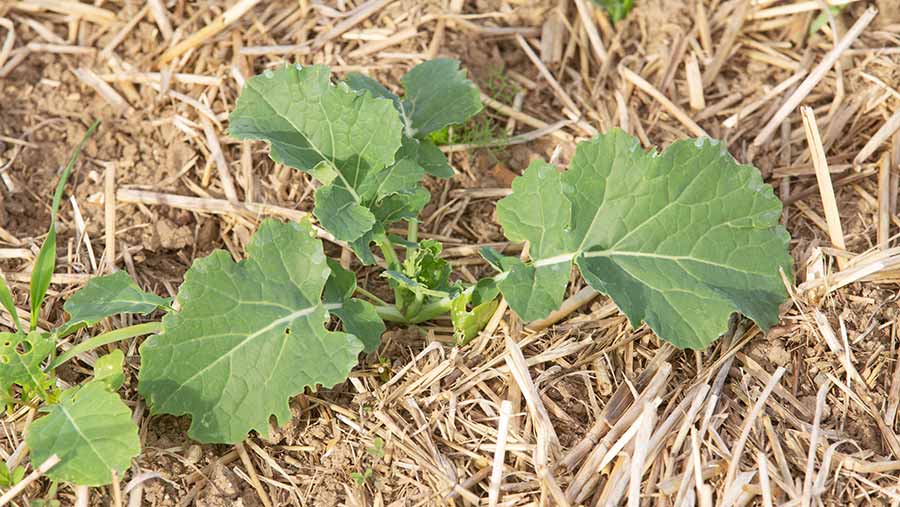
© Tim Scrivener
Direct drilled
His crop of the high-erucic acid rapeseed (Hear) variety Ergo was direct drilled with his CrossSlot drill at 45 seeds/sq m on 24-25 August, with the exception of one field, which need to be levelled and was cultivated to 150-200mm.
“Interestingly, that is our worst field of rapeseed. Not surprisingly, it has really struggled for moisture and has been much slower to get going,” Mr Lord adds.
As before, a companion crop of vetch and clover is being grown, with the vetch drilled with the oilseed rape and the clover being rolled in with slug pellets afterwards. Already the vetch is nodulating and both companion species are growing well, despite the lack of rain.
High stubble
One observation by Mr Lord is that fields with the biggest oilseed rape plants and least flea beetle damage are where the stubble from the previous crop was left high.
“Oilseed rape after rye is looking very good. We can’t cut spring barley as high, but we do try to do that with the spring oats. It’s made a difference this year,” he says.
About half of the crop had an application of clethodim for blackgrass control in early October, with AstroKerb (propyzamide + aminopyralid) planned for as late in the year as possible, to deal with a varied weed spectrum and take out the companion plants.
The only other autumn action that might be required is if phoma starts to appear, but the dry conditions to date mean that there are no signs of disease. Pigeon patrol, however, is just starting.
Last year’s oilseed rape crop averaged 3.3t/ha, with yields ranging from 2.9-3.9t/ha. “The yield variance was all down to drainage. There is a strong correlation between the two on this farm,” he adds.
Sam Paske
Hail Weston Farms Ltd, St Neots, Cambridgeshire
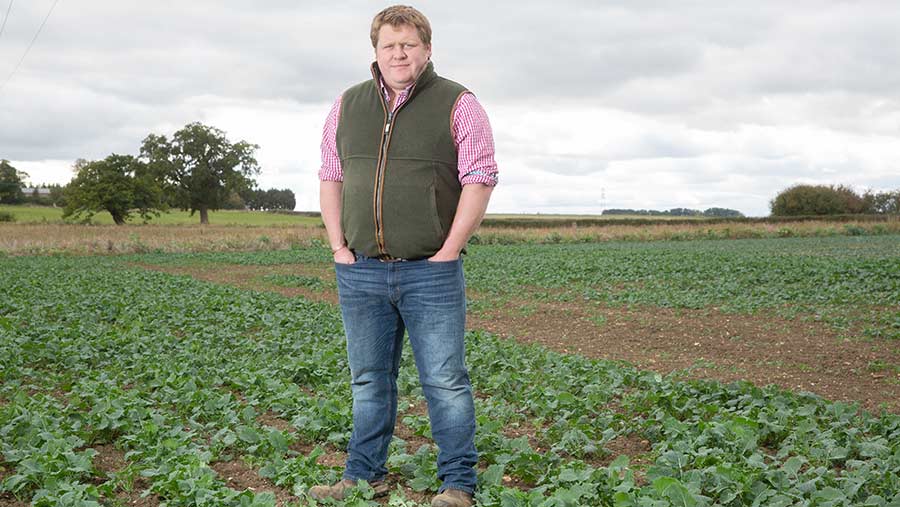
Sam Paske © Tim Scrivener
It’s touch and go for a small area of the 81ha of oilseed rape that farm manager Sam Paske has established this year. The primary cause is moisture stress, but flea beetle has also done its best to make life difficult for the small plants.
“We have 25ha of oilseed rape which is not as good as I would like it to be. Of that, 10ha will be fine, 9ha has already been scrapped and the rest is hanging by a thread,” he says.
In contrast, the remaining majority of his oilseed rape crop went into moist seed-beds and then benefited from some rain. It is growing well after one insecticide application.
“The flea beetle pressure wasn’t high everywhere. So the crop has either had one or two pyrethroid sprays. At £2.93/ha for an application, it’s been worth repeating where the beetles are still active,” he says.
Seed rate
Drilling started on 13 August, using home-saved conventional varieties Flamingo and Picto, at a seed rate of 5kg/ha. Glyphosate was used ahead of drilling, before he went in with a Horsch Tiger cultivator fitted with a Techneat Terracast seeder.
“We built this bit of kit in the workshop to allow us to establish rapeseed in one pass without too much soil disturbance. The seeder has a split hopper, so we can put slug pellets down at the same time,” explains Mr Paske.
It has proved effective – helping to bring down the time and costs associated with oilseed rape establishment, while also reducing the blackgrass pressure on the farm’s very heavy clay soils.
Since then, the rapeseed crop has received 30kg/ha of nitrogen in the form of diammonium phosphate (DAP), to help it along. Falcon (propaquizafop) has been applied to the entire 81ha of rapeseed for volunteer control, with clethodim planned for some of it.
Tissue tests
Mr Paske has also just taken some tissue tests, with the intention of monitoring micronutrient levels and getting advance warning of any shortfalls.
“The idea is to make sure the crop has what it needs for optimum performance. I will be concentrating on boron, molybdenum and manganese levels in both varieties as the season progresses,” he says.
Having reduced the costs of growing oilseed rape – especially in its early stages – he is now looking for ways to optimise inputs.
“The average oilseed rape yield at harvest was 3.75t/ha. Of the three varieties we had in the ground, Elgar didn’t yield as well as the Picto or the Flamingo,” he says.
Whizz Middleton
TC Shaw & Sons, Lilley, Bedfordshire

Whizz Middleton © Tim Scrivener
It’s back to basics with oilseed rape growing in Bedfordshire this season, as grower Whizz Middleton aims to keep the crop’s growing costs in check.
Her oilseed rape was direct drilled in the third week of August into very good seed-beds, using the farm’s Horsch Sprinter drill, and was then rolled twice.
Like other oilseed rape crops in the area, it has since come under heavy attack from flea beetles, so has received several pyrethroid sprays at night. Two applications of slug pellets have also been made, following evidence of pest grazing.
“With hindsight, we should have drilled earlier. We were worried it was too dry, but some game cover drilled at the beginning of August has done very well,” she says.

Young OSR © Tim Scrivener
Flea beetle onslaught
Nitrogen was applied to the crop as soon as it was visible, to help it grow away from the flea beetle onslaught as drought and flea beetles have made things difficult.
Some much-needed rain in late September gave the crop a boost, reducing her concerns slightly, so there are no plans to redrill or rip up any of the oilseed rape. A graminicide was used for volunteer control and as blackgrass is now putting in an appearance, an application of clethodim is planned.
Variety choice has changed slightly from last year, with some fields growing the conventional variety Barbados, to be able to use higher seed rates at a lower cost.
“We had moved away from conventionals in the hope that hybrids would give us a yield lift. Last year we grew Clearfield varieties across much of the farm and PT256 in the fields destined for Mrs Middleton’s oil,” says Mrs Middleton.
No yield advantage
“However, we didn’t see the yield advantage that we were hoping for, and at £70/ha for hybrid seed, it concentrates the mind. So Barbados, with its better disease resistance ratings, has come into the mix, alongside PT256 and another Clearfield variety where there are cruciferous weed issues,” she adds.
Herbicide costs were also high last year, as the Clearfield production system requires them to use either Cleravo or Cleranda (imazamox + metazachlor).
Being a member of Linking Environment and Farming (Leaf) entitles the farm to a £13/t bonus, through a supply chain initiative, and helps demonstrate their environmental credentials to their oilseed customers. The farm markets cold-pressed rapeseed oil, as well as salad dressings and mayonnaise.
Yields were more than 4t/ha from the PT256, but the Clearfield varieties produced 3.6t/ha last year.
“This season, the aim is to try to grow the rapeseed with an eye on costs, as well as reduce some of the yield variation we seem to get,” she says.
Sponsor’s message
Modern agriculture is about making the best decisions for your business. There is little growers can do to shelter from volatile markets and unpredictable weather, but trying to eliminate risk from crop protection programmes is something you can influence.
Putting farmers on the front foot is what Corteva Agriscience’s product pipeline does. Our latest innovation is to bring the revolutionary herbicide molecule Arylex Active into the oilseed rape market.
Belkar is a game-changer, allowing you to see a crop before you invest in herbicide products to protect it. High-risk front loading before the crop has establish becomes a thing of the past with Belkar. This is your opportunity to take fewer chances and only tackle the key weeds you know are there.
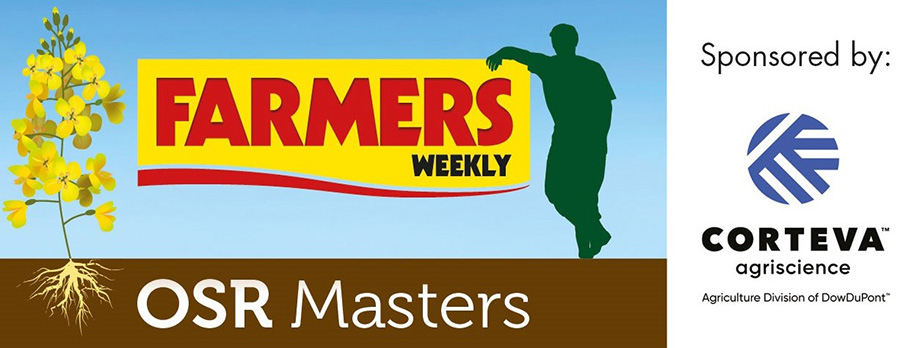
Farmers Weekly had full editorial control of this report.

